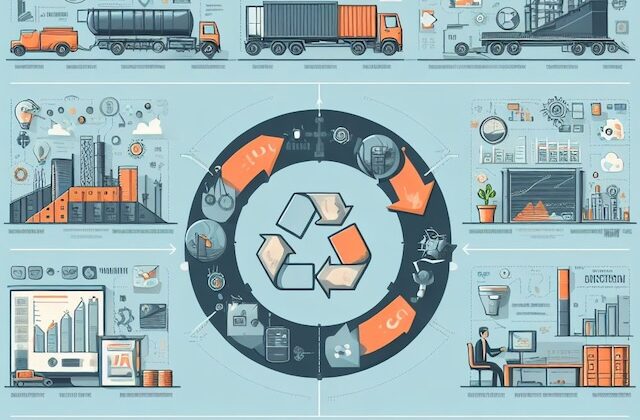
Product Scaling
“The best products don’t just fulfill needs; they create desires.”
– Satya Nadella
Welcome to Day 22 of the PM series – Product Management in 30 Days!
In the ever-evolving landscape of product management, scaling is the pinnacle of achievement. It’s not just about expanding a product; it’s about strategically growing its reach, functionality, and impact. This guide explores the strategies, principles, and techniques behind successful product scaling, drawing inspiration from a real-world example. By the end, you’ll be well-prepared to confidently embark on your own product scaling journey.
Learning Objectives
- Understanding Product Scaling: Recognize that product scaling goes beyond mere expansion; it involves strategic growth in reach, functionality, and impact. Understand that scaling is a strategic evolution, emphasizing quality and value delivery.
- Why Scale a Product? Comprehend the multifaceted benefits of scaling a product, including increased market presence, improved cost efficiency, enhanced user experience, competitive advantage, and revenue growth. Appreciate the significance of scaling in reaching untapped potential and elevating competitiveness.
- Strategies for Scaling a Product: Differentiate between horizontal and vertical scaling strategies. Understand the importance of adding new features and functionalities and forming partnerships and alliances in the scaling process.
- Product Scaling Frameworks: Familiarize yourself with the Lean Startup Methodology and its emphasis on iterative development and validated learning. Understand the AARRR Model (Pirate Metrics) and its key metrics for product scaling.
- Challenges and Pitfalls in Product Scaling: Identify common challenges associated with product scaling, such as maintaining quality, managing technical debt, addressing customer support, navigating regulatory compliance, and effective financial management. Recognize the importance of talent acquisition and retention in the context of product scaling challenges.
⬆️ Understanding Product Scaling
Product Scaling isn’t simply about getting bigger; it’s about getting better. It’s about expanding a product’s horizons while delivering more value to users. The art of scaling is a strategic dance of evolution, not just growth.

🤷♂️ Why Scale a Product?
Why go through the complexity of scaling a product? It’s more than just increasing the bottom line. Scaling opens up new markets, elevates competitiveness, and delivers more value to users. It’s about reaching untapped potential.
Scaling a product refers to the process of increasing its reach, capabilities, and impact. Here are five reasons why scaling a product is essential:
- Increased Market Presence: Scaling allows a product to reach a broader audience and enter new markets. Expanding the user base not only boosts revenue but also enhances the brand’s visibility and influence in the market. e.g., By scaling its online streaming service to additional countries, a media company can tap into new audiences and diversify its market presence.
- Improved Cost Efficiency: Scaling often leads to economies of scale, reducing the per-unit cost of production and operation. As the volume of users or customers grows, fixed costs get distributed across a larger base, improving overall cost efficiency. For example, A software-as-a-service (SaaS) company can achieve cost savings per user as it acquires more customers, making the platform more financially sustainable.
- Enhanced User Experience: Scaling allows for investments in technology, infrastructure, and customer support, leading to an improved user experience. A scalable product can handle increased traffic and usage without compromising performance. e.g., scaling a social media platform’s infrastructure ensures seamless user interactions, even during peak usage times, contributing to a positive user experience.
- Competitive Advantage: Scaling enables a company to stay ahead of or keep up with competitors. A product that can adapt and grow to meet market demands is better positioned to compete and maintain relevance in a dynamic business environment. e.g., An e-commerce platform that scales its product offerings, payment options, and delivery services can stay competitive in a rapidly evolving online retail landscape.
- Revenue Growth and Profitability: Scaling a product often leads to increased revenue through a larger customer base, expanded product lines, or additional features. Achieving economies of scale also contributes to improved profitability. e.g., A mobile app that scales by introducing premium features or expanding its user base through targeted marketing can experience significant revenue growth.
🎲 Strategies for Scaling a Product
Scaling is a multi-dimensional journey. Here’s how we navigate it:
#️⃣ Horizontal Scaling: Expanding within the same market or demographic is horizontal scaling. It’s about capturing more of your existing user base through localized marketing and feature enhancements.
#️⃣ Vertical Scaling: On the other hand, vertical scaling is about venturing into new markets or customer segments. It’s the strategic move of diversification and globalization.
#️⃣ Adding New Features and Functionalities: Your product often needs enhancements to achieve broad appeal. Prioritization of these features is key, ensuring you meet the diverse needs of your user base.
#️⃣ Partnerships and Alliances: Building strategic relationships can redefine your product’s path to scaling. From identifying opportunities to negotiating and leveraging partnerships, this strategy is vital.
🖼️ Product Scaling Frameworks
Frameworks offer guidance in your scaling journey:
*️⃣ Lean Startup Methodology: This approach prioritizes iterative development and validated learning. It’s about adapting as you go, learning, and growing in the process. Iterative development is the key to building successful products. We have discussed this in detail in Day 14 – Iterative Development
*️⃣ The Pirate Metrics (AARRR Model): Acquiring users, activating them, retaining their interest, generating revenue, and encouraging them to refer others – these are the metrics that matter in scaling. We have discussed this in detail in Day 15 – Product Analytics
⚠️ Challenges and Pitfalls in Product Scaling
It’s not always smooth sailing. Scaling comes with its challenges:
- Maintaining Quality: Balancing quality with quantity is a perpetual challenge. Ensuring that your product retains its integrity and value even as you expand is crucial.
- Managing Technical Debt: Over time, technical debt can accumulate. Handling this debt without hindering scalability is an art that every product manager must master.
- Customer Support and Communication: Providing effective customer support becomes increasingly complex with a growing user base. Communicating changes and updates and addressing user concerns can become challenging at scale.
- Regulatory Compliance: As a product scales, it may need to comply with additional regulations and legal requirements in different regions. Navigating diverse regulatory landscapes can pose a significant challenge.
- Financial Management: Managing financial resources effectively during rapid scaling is critical. Mismanagement can result in overcommitting resources or insufficient funding to support growth initiatives.
- Talent Acquisition and Retention: Attracting and retaining skilled professionals to support growth can be a significant challenge. Rapid product scaling may outpace the hiring process, leading to a shortage of qualified personnel.
💁♀️ A Real-World Example – The Scaling of Netflix
Let’s dive into a real-world case study: the remarkable product scaling journey of Netflix.
1️⃣ Netflix’s Initial Vision: It all started with a DVD rental service, revolutionizing how we watched movies.
2️⃣ Horizontal Scaling: The shift to online streaming made Netflix a household name, captivating millions within the same market.
3️⃣ Vertical Scaling: Netflix’s global expansion, adapting to diverse demographics worldwide, exemplifies vertical scaling at its finest.
4️⃣ Adding New Features and Functionalities: Original content, personalized recommendations, and user profiles enriched the user experience, underscoring the importance of evolving and improving to scale.
5️⃣ Partnerships and Alliances: Netflix’s collaborations with content providers and device manufacturers were instrumental in its expanding reach.
🧘♂️ Best Practices for Successful Product Scaling
The path to scaling success requires adherence to certain principles:
➡️ A Data-Driven Approach: Base your product scaling decisions on data and user feedback. It’s not guesswork; it’s an informed strategy.
➡️ User-Centric Focus: Remember that the users fuel your scaling journey. Prioritize their satisfaction and retention.
➡️ Agility and Adaptability: Stay agile and flexible, able to pivot and evolve in response to shifting market conditions.
🔔 Conclusion: The Art of Scaling with Purpose
Ultimately, Product scaling is not just about getting bigger; it’s about getting better and delivering more value. Extend your product’s reach and impact while maintaining quality and meaning. Armed with this guide’s strategies, frameworks, and real-world insights, venture forth on your scaling odyssey with clarity and confidence.
Quiz Time
Question: What does product scaling primarily involve?
A. Reducing functionality
B. Increasing complexity
C. Strategic growth in reach, functionality, and impact
D. Limiting user base
Question: What is a key benefit of scaling a product?
A. Decreased market presence
B. Reduced user experience
C. Improved cost efficiency
D. Limited competitiveness
Question: What is the emphasis of the Lean Startup Methodology in product scaling?
A. Traditional development
B. Iterative development and validated learning
C. Rapid feature releases
D. Fixed development cycles
Question: What does the AARRR Model focus on in the context of product scaling?
A. Technical debt management
B. User acquisition, activation, retention, revenue, and referral
C. Market expansion only
D. Exclusive partnerships
Question: What are some common challenges associated with product scaling?
A. Reducing quality and quantity balance
B. Avoiding technical debt accumulation
C. Navigating regulatory compliance and effective financial management
D. All of the above
✍️ Write your answers in the comment section. e.g 1-a, 2-b, 3-c etc.
If you want to learn more about product management, you can also find other posts. The Full series is available here
One of the recommended books to learn about product management is The Lean Product Playbook by Dan Olsen
💌 Do drop me a comment below if you found the content useful and/or want me to write on a specific topic. This will make my day! 🙂
Also, share the post if you think this might help someone. The sharing link is at the top of the page.
Join FreeMentor as a student if you are a newbie in product management and want to have one Free 1:1 mentorship session.
#ProductManagement #ScalingStrategies #ProductScaling #ProductGrowth #RealWorldExample

